Political Murals of Northern Ireland (1970s - 2010)
This is a modified version of a post I did on a messageboard in 2010. It was written primarily for people from outside Ireland. The images used were gleaned from various sources online.
Political Murals of Northern Ireland
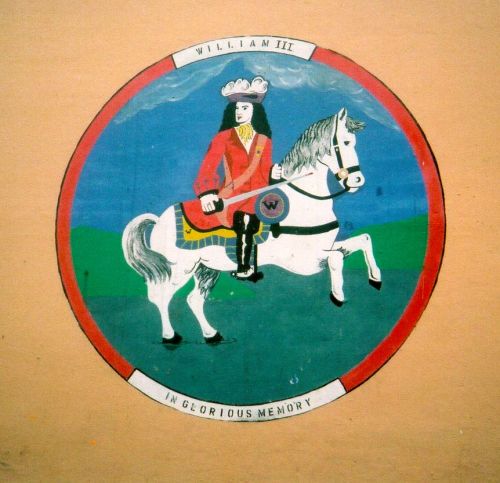
There is a rich tradition in Northern Ireland of painting political murals. As far as I am aware, prior the Troubles, some murals did exist, usually depicting William of Orange (e). However since 1969 their popularity has increased and there have been several thousand painted by artists on both sides of the community. These murals are generally, though not exclusively on the gable ends of houses, in working class areas of the main cities. Although murals can be seen elsewhere the majority exist in these locales. They deal with a variety of themes, generally related to the sociopolitical identity of the local community. Some commemorate fallen comrades (a), some celebrate paramilitary factions (b), others mark historic events, others still, especially in more recent years celebrate the local culture in non-divisive ways by emphasising mythology, community progress etc.
a)
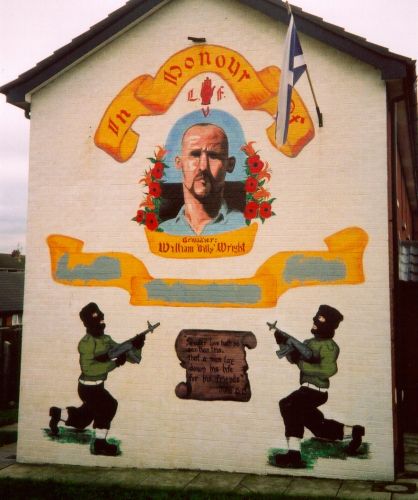
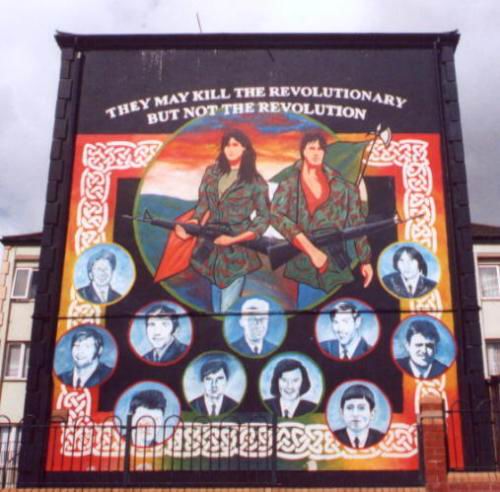
b)

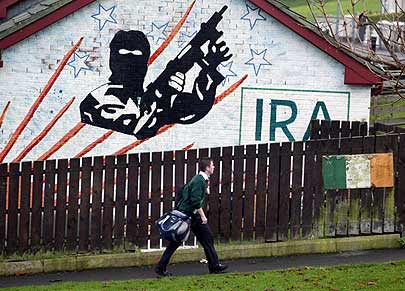
The murals typically include some of the iconography associated with one or other of the communities but also sometimes incorporate pop cultural references. Murals have been documented that have incorporated Eddie the Iron Maiden mascot, Bart Simpson and other cartoon characters(d).
d) 
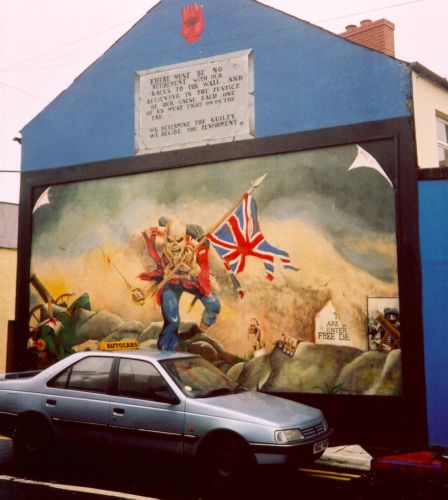

One of the main differences between Loyalist/Unionist murals and Republican/Nationalist ones is that the latter are often willfully multicultural, depicting solidarity with other national struggles throughout the world (d). This internationalist approach is a legacy of Irish radical Republicanism's traditional left wing ethos and international support base. Murals have been painted that include statements of support for Palestine, the Basque Country, FARC in Colombia, Cuba, and other left-wing national struggles. In recent years, as the violence has subsided more and more of these murals display political commentary on the international scene. Those Loyalist/Unionist murals that look abroad tend to look to the Ulster-Scots elsewhere, in Scotland or America (e). For example, a number of murals portray American Presidents of Ulster-Scots heritage, of which there are quite a few.
d)
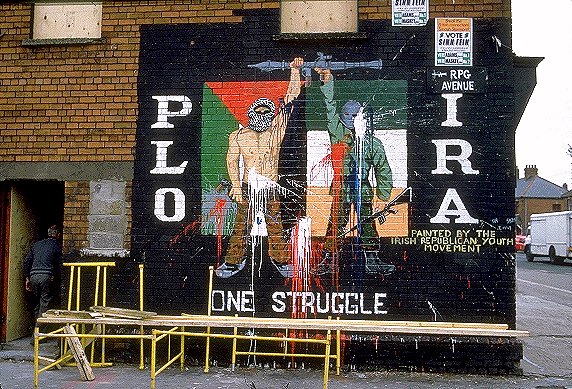

e) 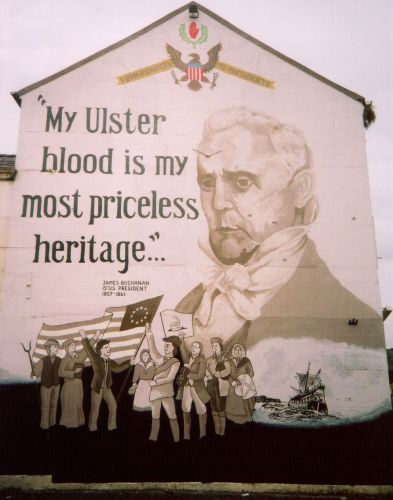
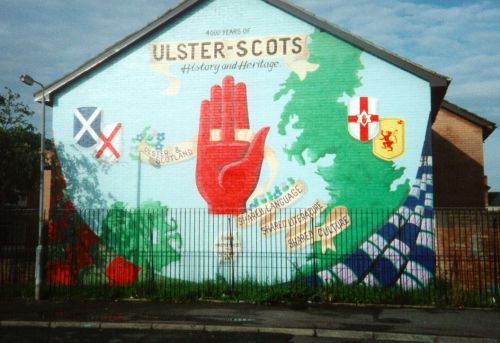
Talking purely about aesthetics some are beautifully done, using either graphic design style work or just a nice attention to detail (f). While many seem the competent work of trained or practiced painters others are quite folksy are badly drawn. Some are cartoonish or kitsch in an unintended way (g). The menace or gravitas of some murals is deflated by the amateurishness of the rendition.
f)


g)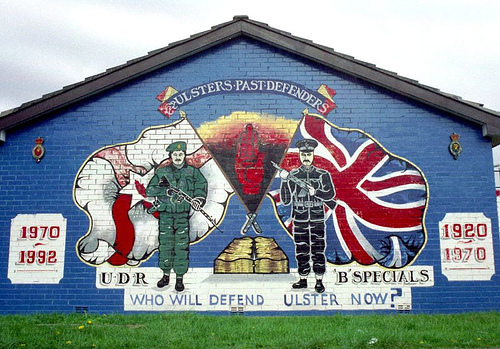

Some murals are done with humorous intent albeit a political underpinning and are often blackly comic (g). Indeed some subvert the ideas and ideals of the communities for other purposes in a humorous way (h).
g)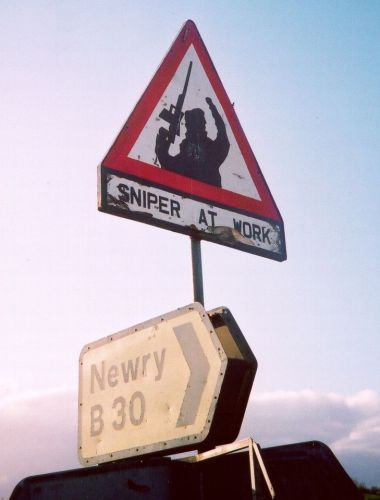

h)
For obvious reasons, there are a number of murals that lionise convicted murderers, in the mural below (i) "His only crime was loyalty" would more accurately read "His only crime was murdering people at a funeral."
i) 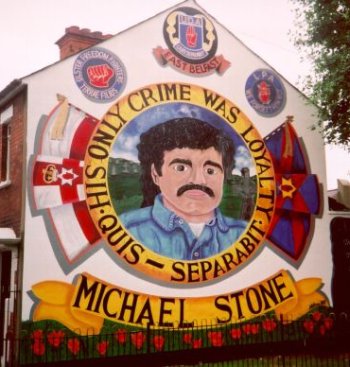
Not all murals are overtly divisive in a political sense. Many, especially recent ones describe events in Northern Irish and wider world history such as the Titanic (j)which was constructed in the Belfast shipyards. Some murals convey commentary on contemporary international events such as the Iraq invasion of 2003 (k).
j)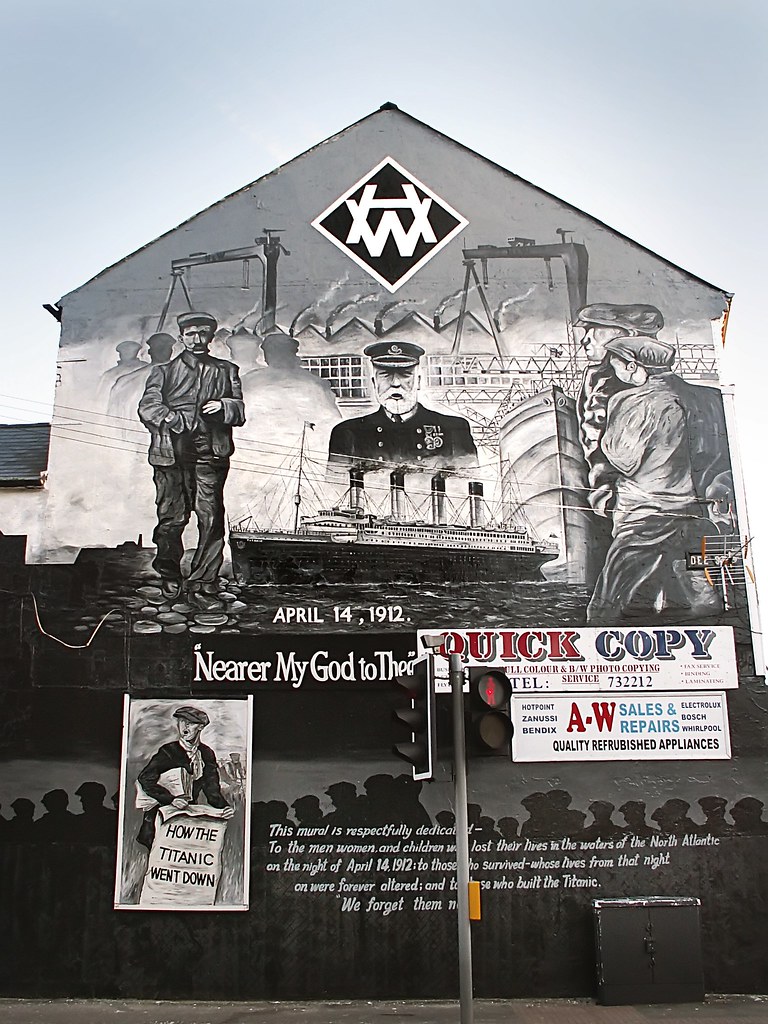
k)
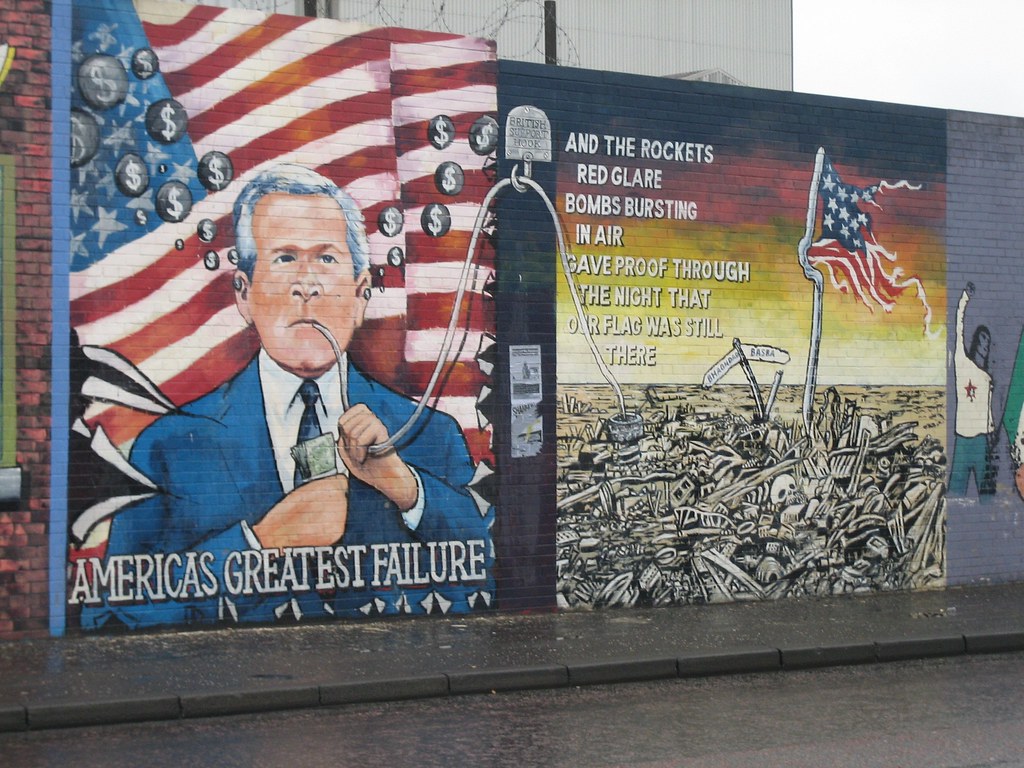
These type of murals by and large don't exist in the Republic of Ireland, nor to the best of my knowledge in Britain. I have heard that in some Irish communities like South Boston in the US you can see some of these murals. There is a mini-industry in Northern Ireland currently of mural tourism. You can get a taxi tour or view them from a tour bus. I recommend such a tour to a visitor to Belfast or Derry as the drivers can provide stories and context for the murals.
To view more murals and find out more information please visit this site: http://cain.ulst.ac.uk/mccormick/

























No comments:
Post a Comment